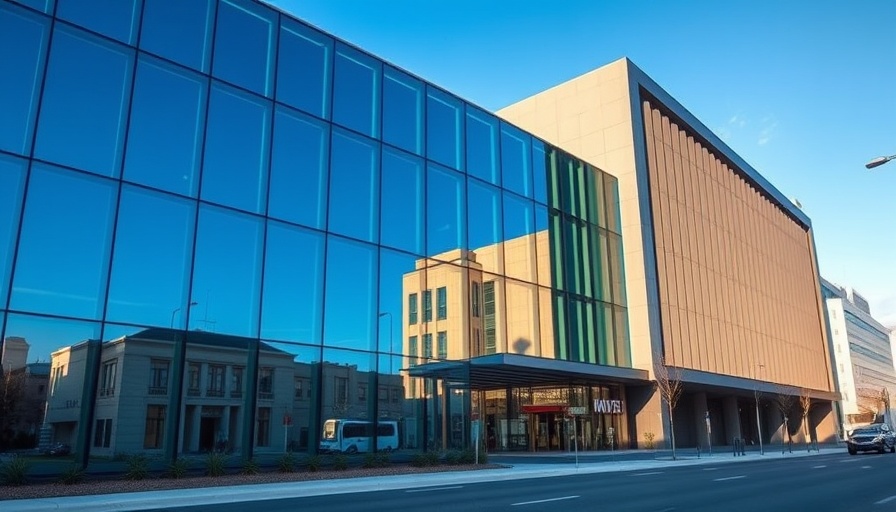
Revolutionizing Broadcasting: Mass Timber's Role
Cincinnati is making waves in the world of architecture and broadcasting with the introduction of the nation’s first entirely mass timber broadcast facility. Designed by Emersion DESIGN and built by Skanska, this cutting-edge building highlights a sustainable future in commercial real estate. At 35,000 square feet, it incorporates cross-laminated timber (CLT), a material celebrated for its strong environmental credentials. In an age where sustainability is paramount, this project sets a benchmark that could influence future developments nationwide.
The Fine Balance: Aesthetic and Acoustic Precision
One of the notable features of this facility is its commitment to acoustics. With two on-air studios, a podcast suite, and a performance space, every element has been meticulously designed to optimize sound quality. The combination of mass timber and acoustic insulation creates an environment where sound clarity is paramount. Furthermore, the extensive use of glass, both inside and out, allows natural light to flood the spaces, enhancing both the user experience and the aesthetic appeal of the facility. Such design ingenuity illustrates a clear understanding of how environment plays a role in broadcasting.
Challenges and Triumphs of Construction
Constructing the Cincinnati Public Radio facility came with its own set of challenges. The project was completed in just over five weeks, showcasing a seamless collaboration between Skanska, Emersion DESIGN, and Nordic Structures. Jeff Smoker, preconstruction manager for Skanska, attributed much of the project's success to the detailed planning and coordination required for working with mass timber. Every aspect of the construction was carefully executed, demonstrating the expertise that Skanska has achieved in handling mass timber materials.
Why Choose Mass Timber? Benefits Beyond Sustainability
Choosing mass timber over conventional materials like steel or concrete is not just an eco-friendly decision—it also brings a variety of advantages. Mass timber is lighter than many traditional materials, allowing for quicker assembly and reduced foundation costs. Additionally, CLT's thermal properties contribute to energy efficiency. As cities become increasingly aware of the benefits of sustainable building practices, the use of mass timber is likely to become a trend in various sectors, including commercial real estate and more.
Future Predictions: A Shift Towards Sustainable Construction
The Cincinnati Public Radio facility is paving the way for a shift in construction standards. As local governments and communities prioritize sustainability, mass timber projects may emerge as a preferred choice. Building codes and regulations are evolving to embrace eco-friendly materials, and this facility could serve as a model for future commercial developments. The implications are vast; not only can this influence how future broadcast facilities are constructed, but it could also spur new trends across various industries, pushing the envelope of sustainability.
Emotional Connection and Community Impact
Beyond its architectural significance, the mass timber broadcast facility represents a new heartbeat for the community in Walnut Hills. It is expected to become a cultural hub, attracting not only broadcasting professionals but also community members from diverse backgrounds. This inclusive approach to space aligns with the growing trend of creating community-centric buildings that foster collaboration and engagement. Such facilities can cultivate pride in local identity, serving as a space for creativity and connection.
In conclusion, Cincinnati's mass timber broadcast facility serves as a testament to innovative design and sustainability. As stakeholders in commercial real estate, it is crucial to consider how such alternatives can not only reduce environmental impact but also enhance user experience and community presence. Emerging trends indicate that sustainability will drive the future of construction, and projects like this one are at the forefront of this shift.
As we look to the future of architecture and design, consider how sustainable innovations like this can impact upcoming developments in your area. What can you do to support more eco-friendly building practices in your community?
 Add Row
Add Row  Add
Add 




 Add Row
Add Row  Add
Add 
Write A Comment